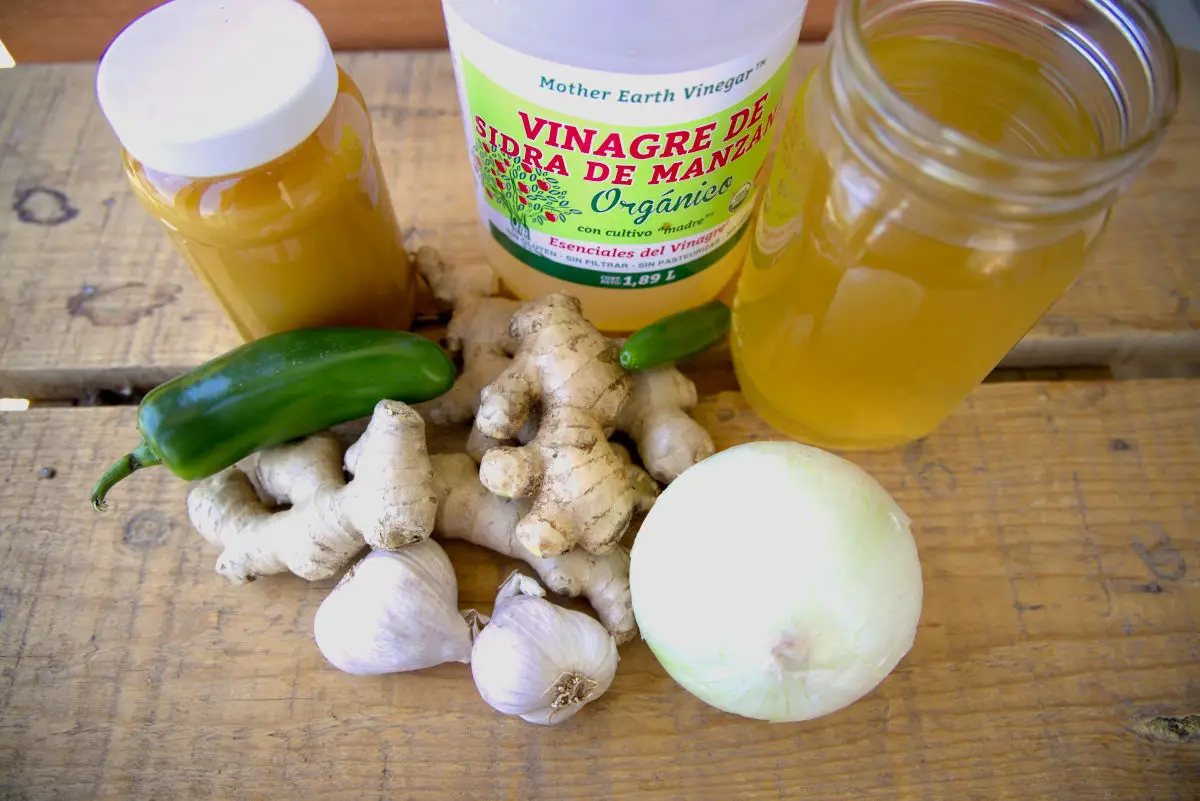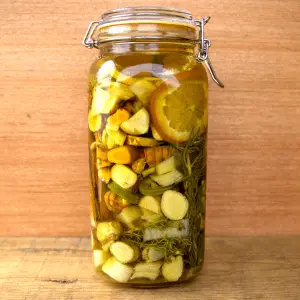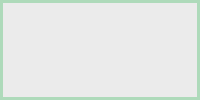As an herbal health tonic, fire cider has been used widely for decades. Learn how to make fire cider and you will have neverending access to an immune-boosting infusion (technically an oxymel if you add the honey). Considered a folk remedy, it is pungent, spicy, and loaded with beneficial bacteria.

How to Make Fire Cider
For those interested in natural preventative medicine and herbal remedies, this can be an excellent addition to your regimen. It’s a simple concoction coined initially in the 80s by the renowned herbalist Rosemary Gladstar, and it has grown in popularity and variety ever since. Be sure to save this recipe to make in the fall in preparation for the winter flu season!
Base Ingredients & Their Benefits
These are considered base ingredients, but there is still room for play. The proportions are very flexible, and if you can’t find something….you can usually just omit it! I cannot find fresh horseradish in Mexico for the life of me, so my batches made here exclude it. The only ingredients I would call essential are apple cider vinegar, onion, garlic, and hot peppers.
Apple Cider Vinegar– Raw ACV is a wellness powerhouse. In its own fermentation process, ACV develops an acetic acid that is believed to offer antimicrobial and antioxidant properties. It is full of probiotics that support a healthy immune system and gut health. Ongoing research suggests that it can aid in weight loss, reduce blood sugar levels, and help lower cholesterol.
*This is a perfect opportunity to use some of your homemade apple cider vinegar! I love when something homemade lends itself to something else homemade. That’s what it’s all about! Just be aware that unless you determine your homemade vinegar is at 5% acidity, it is safest to store your fire cider in the fridge.
Garlic– Raw garlic contains compounds that work to boost your immune system. Amongst other benefits, these sulfur compounds can help reduce blood pressure and lower cholesterol levels. This is an allium with great medicinal and culinary functionality.
Onion– In the same vein as garlic, onion contains immune-supporting compounds. The consumption of onions is linked to increased circulation, increased bone density, and improved heart health. Onions are nutrient-dense with vital minerals and vitamins.
Horseradish– This root vegetable is pungent in odor & flavor and loaded with beneficial nutrients and micronutrients. The “spice” or “heat” of horseradish help with digestion and circulation. It has powerful antibacterial effects.
Ginger Root– Most commonly used as a natural remedy for stomach nausea and inflammation, ginger supports the body through soothing. Gingerol is the main compound in ginger responsible for its many immune-boosting properties. This root has anti-inflammatory, antioxidant, and anti-microbial effects.
Hot Peppers– The ingredient that makes peppers hot- Capsaicin- is also responsible for cleansing your system (used as a decongestant and pain reliever). High in vitamins C & D, hot peppers supply essential immune support.
Honey– Using raw local honey can act to soothe sore throats, aid in digestion, and boost your immune system. With antifungal and antibacterial properties, raw honey can be an excellent therapeutic.

Additional Ingredients
Citrus– This adds brightness to the tonic as well as an extra boost of vitamin C.
Fresh Herbs– These can help round out the aromatics and flavor of your cider as well as add healing properties. Fresh herbs all have their own benefits!
Cinnamon Sticks– They can help lower blood pressure, fight inflammation, and provide healthy antioxidants. The compound that gives cinnamon its medicinal attributes is called cinnamaldehyde. Cinnamon can also add a lovely sweetness/spiciness to your cider.
Black Peppercorn– This addition works well with turmeric to make its main healing ingredient- curcumin- more bio-available.
Turmeric Root– The compound curcumin found in turmeric is responsible for many of the root’s anti-inflammatory effects. It works to boost the body’s antioxidant enzymes and is quite powerful at reducing inflammation.

Storage & Use
Once strained and sealed in an airtight container, you can store your fire cider either in the refrigerator or in a cool dark location. It will last for at least a year! You can even save the strained contents to use….why waste?!
Feed the infused scraps to your outdoor chickens, dehydrate and grind them into a powder for seasoning, or freeze them in portions to add to stir-fries. I usually remove the citrus and then add bits to other vegetable sauteés.
The easiest and most common way to use your cider is to take 1-2 tablespoons straight. During flu season you can do this daily, but any frequency will have benefits. If the flavor is a little too harsh for your liking, there are other ways to consume your tonic.
In its raw form, it is most alive with health benefits. So, dilute it with some juice, make your own salad dressings with it, or use it as a replacement for vinegar in your favorite homemade condiments.
There are a multitude of ways to cook with it as well. Some people add it to broths, sauces, or sauteés. Try marinading or braising your meats in it. You can make tea by adding 1 part fire cider to 4 parts hot water and sweetening it with a squeeze of lemon juice and additional honey.
*We are not certified medical professionals or herbalists. This article represents our own experiences with natural remedies and does not constitute medical advice. Do your own research and consult a doctor if need be!
FAQs (Frequently Asked Questions)
Absolutely. Fire cider recipes are flexible, and you can customize the ingredients and their quantities based on your preferences and dietary needs.
Yes, you can use fire cider as a flavorful addition to marinades, sauces, or dressings. Keep in mind that heating it may reduce some of the benefits of the raw ingredients.
More Uses For Homegrown Herbs
There are many ways to utilize homegrown herbs that boost the flavor of your kitchen creations and add to your healthy lifestyle.

Fire Cider
Equipment
- ½ gallon mason jar (or equivalent)
- fermenting weight (optional)
- plastic lid or parchment paper
- Fine mesh strainer
- Funnel
- 2 quart-sized mason jars
Ingredients
- 1 onion chopped
- 1 c ginger root chopped or grated
- 1 c horseradish root chopped or grated
- ¼ c turmeric root chopped or grated
- 6 cloves garlic peeled
- 2 sprigs rosemary
- 3 sprigs thyme
- 1-3 hot peppers sliced
- 1 lemon sliced
- 1 orange sliced
- 1 tsp whole black peppercorn
- 3 cinnamon sticks
- 4-5 c raw apple cider vinegar enough to cover ingredients & fill jar
- ¼ c raw honey add to taste after 3-4 week infusion
Instructions
- Wash your roots, fruits, and herbs thoroughly (since the skins and rinds will remain in the infusion). Chop or slice the ingredients called for.
- Layer your prepared ingredients (everything except the vinegar and honey) in a large glass vessel.
- Pour ACV over the contents, making sure they are covered.
- Place a fermentation weight on top to hold down the solids below the vinegar. *Optionally fill a plastic bag with water to lay atop or commit to stirring the contents once a day. This is to prevent mold growth.
- Screw a plastic lid on your jar or place a piece of parchment paper between the glass and the metal lid and band if that's what you are using. You want to prevent the vinegar from rusting the metal.
- Allow your fire cider to sit in a cool, dark location for 3-4 weeks.
- Use a fine mesh strainer placed inside a funnel to strain out the solids. Strain the liquid into the glass container you wish to store your cider in.
- Stir in honey to taste. It is ready to enjoy! Seal with an airtight lid and store in your refrigerator or a cool, dark location. It should last at least a year.
Notes
- As a preventative, the recommended intake is 1-2 tablespoons daily during sick seasons, but see the blog for other options.
- Shake your bottle before pouring, as sediment will settle at the bottom.
- Feel free to alter the ingredients used! The only ones I would call essential are ACV, onion, garlic, and hot peppers.
- This recipe will make approximately 6 cups of cider, but you can easily scale it up or down.
- Your strained scraps can be saved and used! Freeze & add a handful at a time to stir-fries or dry & grind everything up into powder for seasoning.
- If you use homemade ACV, store your cider in the fridge unless you can guarantee your vinegar has a 5% acidity. Store-bought ACV has been stabilized at 5% acidity which affects preservation.

This looks so good! What a great natural remedy to have on hand!
It’s a staple for sure!
Thanks for sharing!
Hope it does you wonders this winter season!